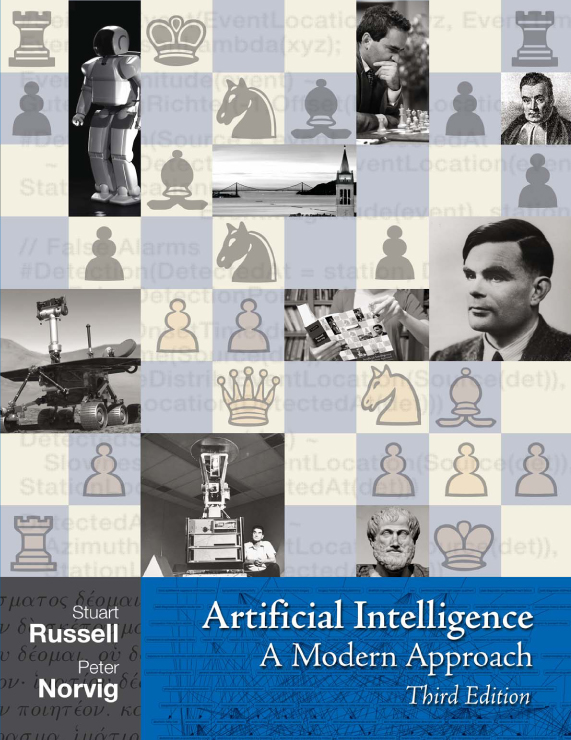Course Materials
Textbook
Stuart Russell and Peter Norvig (2010). Artificial Intelligence: A Modern Approach (Third Edition). Prentice-Hall.
LaTeX
The link below teaches you how to get LaTeX set up.
The followings are links to my favorite LaTeX tutorial. They cover the most basic to slightly advanced LaTeX, which you may need in this course.
- https://www.overleaf.com/latex/learn/free-online-introduction-to-latex-part-1
- https://www.overleaf.com/latex/learn/free-online-introduction-to-latex-part-2
- https://www.overleaf.com/latex/learn/free-online-introduction-to-latex-part-3
If you get stuck, Stack Overflow may be one of your best friends.
Tips
These tips have been collected through the years from professors, past and present. You can also check out the Learning How To Learn coursera for other general tips.
Don’t fall behind
In a conceptual class such as this, it is particularly important to maintain a steady effort throughout the semester, rather than hope to cram just before homework deadlines or exams. This is because it takes time and practice for the ideas to sink in. Make sure you allocate a sufficient number of hours every week to the class, including enough time for understanding the material as well as for doing assignments.
Take the homeworks seriously
The homeworks are explicitly designed to help you to learn the material as you go along. Although the numerical weight of the homeworks is not huge or is zero, we work hard to make them instructive and interesting. Do read the solutions carefully, since doing so is critical for self-grading. You may well learn a different way of looking at the problem, and you may also benefit from emulating the style of the solutions. (In science people learn a lot from emulating the approach of more experienced scientists.)
Don’t procrastinate on homework
Our best advice is to read through the homework problems as soon as they are available, and let them percolate in your brain. Think through possible approaches while you are waiting in line, or stuck in an elevator, or whatever. Sleeping on a problem has often helped people to come up with a creative approach to it. Definitely do not wait until the night before it is due to start working on the homework.
Form study groups
As stated above, you are encouraged to form small groups (two to four people) to work together on homeworks and on understanding the class material on a regular basis. In addition to being fun, this can save you a lot of time by generating ideas quickly and preventing you from getting hung up on some point or other. Of course, it is your responsibility to ensure that you contribute actively to the group; passive listening will likely not help you much. And recall the caveat above that you must write up your solutions on your own.
Pay attention in lectures
As the semester proceeds, many of you will no doubt feel the urge to ‘daydream’ during lectures, or to skip them altogether, on the grounds that you can catch up by reading somebody else’s lecture notes. If you follow this strategy, you should be aware that reading mathematics/AI is NOT the same as reading a novel or a news article: each page of mathematics needs to be read many times before it is fully understood, and needs to be backed up by examples and discussion. Following the material in class should save you several readings. And you also get the benefit of student questions, examples etc. Exactly how you handle lectures is up to you. Sitting together in a group is a good idea with one person designated to keep taking notes no matter what.
